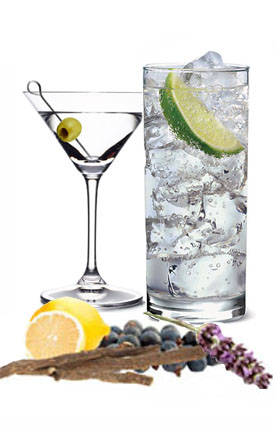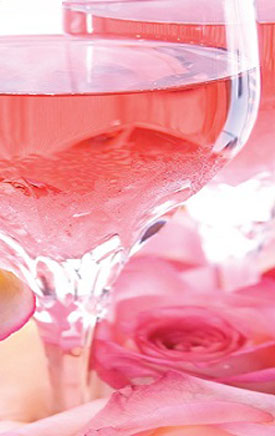- UC Davis
- Best of Friuli
- Questions About Wine
- Chocolate and Wine 101
- Vermont Cheese
- Oregon Wine Country
- Best Chianti Classico
- Best of Cahors
- Wines of the Finger Lakes NY
- Largest Wine List
- Texas Wine
- Champagne
- Best of Playa del Carmen
- Best of Central Coast California - Pt 2
- Best of Central Coast California - Pt 1
- Wine from Virginia
- Bourbon
- Best of Anguilla
- Vodka
- Tequila
- Dessert Wines
- Cognac
- Gin
- Best of Hong Kong & Macau
- Best of Sonoma
- Wines of South Africa
- Beaujolais
- Wines of Sicily
- Wines of Cyprus
- Best Vodka 2004
|
Related Links
|
||
New This Month
Gin - A New Beginning
According to Perry Luntz, the author of Whiskey & Spirits for Dummies, “In the 'beGINning', alcohol beverages were regarded more as medicines than beverages.” In the mid-1600’s, in the Netherlands, one Dr. Sylvius discovered that adding juniper berries to alcohol made the harsh grain alcohol taste better and the medicine easier to take. He called his new beverage jenevre, the Dutch word for juniper.
During the Thirty Years War (1618-1648) England sent troops to Holland and they carried bottles of jenevre home with them. In 1689, King William III of Britain banned all imported spirits, so local British distillers now called their product gin. By 1720, male consumption of gin reached 14 gallons per capita annually. In tropical British colonies, gin was used to mask the bitter flavor of quinine, a protection against malaria, which was dissolved in carbonated water to form tonic water. This was the origin of today’s popular gin and tonic combinations. In 1763, London gin distiller Alexander Gordon removed sugar from the mixture that had been used to flavor the raw spirit. He then added flavorings such as orange rind and coriander to create a unique form of jenevre and called it London dry gin. He named the gin after himself and Gordon’s London dry gin eventually made its way across the Atlantic to the United States (it can be called London Dry even if it is no longer made in London). British gins tend to be around 90 proof (45% alcohol by volume) and are usually combined in mixed drinks. Prohibition in the U.S. (1919-1933) helped promote “bathtub gin” where people poured plain alcohol, distilled water, and suitable botanicals into a container (sometimes even their bathtub), stirred the pot, and used the clear liquid as a mixer in cocktail making. Soon this clear spirit became a symbol of wealth and sophistication and an icon of upper-class American living. Robert Benchley’s classic on entering a room after walking through a rainstorm: “I must slip out of these wet clothes and into a Dry Martini.”
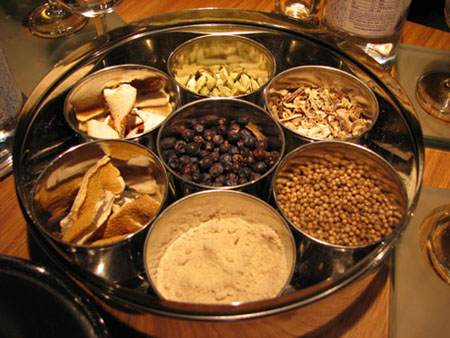
Botanicals used in making gin
According to "Whiskey & Spirits for Dummies", Gin distillers may use as many as 15 different botanicals to produce the distinctive flavor of a specific gin. The exact recipe for any one gin is the major difference between that product and its competitors. In America, by law, to be called a gin, a spirit must contain juniper. The spirit base of gin is primarily grain (usually wheat or rye). The United States may be the world’s largest gin market, but Spain has the highest per-capita consumption of gin in the world. The Martini was supposed to have been created in the bar of the Knickerbocker Hotel in New York City in the early 20th century. The ratio of gin to vermouth started out at about 2 to 1, and it has been getting drier ever since. The great British statesman Winston Churchill, who devoted much thought and time to drinking, was of the opinion that passing the cork from the vermouth bottle over the glass of gin was sufficient to making a Martini.
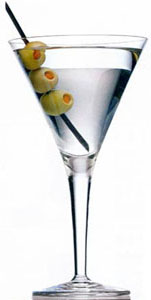
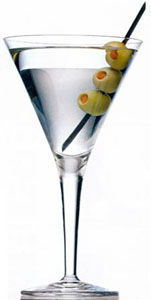
NOTE- Sloe Gin is an already sweetened form of gin that is made by infusing sloes (the fruit of the blackthorn shrubs that are used as hedges in England) in gin. Their juice is red and often cherry juice is added to give it even more color. It is a liqueur used primarily as a flavoring for mixed drinks that may or may not be made with gin. Writing in RI Magazine, senior editor Allison Perlik: “Now that nostalgia is flooding into cocktail menus in the form of classic drinks from Negronis to Tom Collins, it’s once again cool to be old school. Few spirits benefit more from this latest bar-scene infatuation than gin, distained in recent years by modern drinkers for its distinct flavor and old-fashioned reputation.” “We’re entering a golden age of cocktails”, says mixologist and beverage consultant Brian Van Flandern. “People are getting back to flavor- thus gin comes back on the scene. Americans are demanding top-shelf products both in food and drink.”
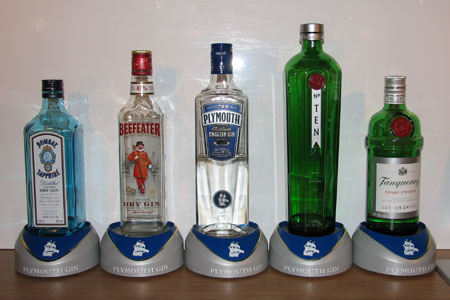
According to the Distilled Spirits Council of the United States (DISCUS), 10,906,345 cases of gin were sold in the U.S. in 2010. The five leading brands of gin in the United States are: Seagram’s- 3,052,000 cases followed by Tanqueray- 1,505,000, Gordon’s- 899,000, Bombay Sapphire- 791,929, and Beefeater- 639,530 cases.
I was invited to visit Black Friars Distillery (a three hour train ride from London) where I learned that Plymouth gin is still made at the distillery from the original 18th-century recipe. (An historic footnote- Plymouth was the major Royal Navy base and the German’s bombed it regularly. The distillery only suffered minor damage & continued production throughout WW II). It is also 82.4 proof and the seven botanicals used include: Juniper Berries, Angelica Root, Lemon Peel, Cardamom Pods, Orange Peel, Coriander Seeds and Orris Root. Sean Harrison, Master Distiller since 1996 and one of only two people who know the formula for making Plymouth, gave me a private tour and a master class in gin.
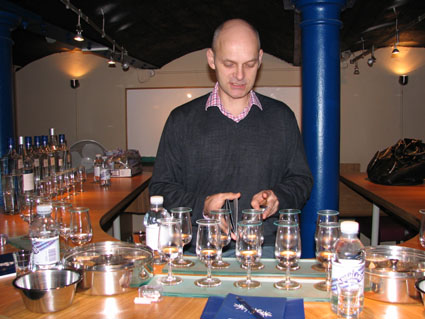
Tasting gins
We started by nosing five gins that included four top sellers and Plymouth, (we did not know which was in what glass). Smell is our most acute sense and our noses do the most work in identifying individual aromas. The aromas most commonly associated with gin are citrus, fruit, floral, earth, spice, sweetness and wood. We then swirled each gin around in our mouth to properly assess its primary taste. Would we detect juniper, coriander and angelica? A drying sensation on the back of the tongue means that the gin contains a greater proportion of rooty substances such as licorice and angelica. Sourness on the upper edges of the tongue indicates larger amounts of lemon peel. Equal amounts of water were added to reduce the strength of the gin by half. All the flavors held in the alcohol were released to reveal the true personality of each gin. Water is used because it does not mask or distort flavors. A distiller is aiming for balance and smoothness. The alcohol should hold all the flavors of the botanicals in harmony. Snifter type glasses were used that allowed me to swirl the spirit and gather the aromas around the rim where they are more easily detected.
Gin & Tonic is still a favorite, but we sampled several other cocktails made with Gin after our master class.
Here are some favorites:
Raspberry Collins- 1 part Gin, 1 part fresh lemon. 1 part pureed raspberries, ½ part framboise, 4 parts soda water, splash of sugar syrup. Shake with ice and strain. Top with soda and float Framboise. Garnish with lemon slice and raspberries.
Mayflower Martini- ½ part dry vermouth, 3 parts Gin, 2 dashes of orange bitters or Cointreau. Stir ingredients in mixing glass with ice. Strain and serve with a twist of lemon.
Red Snapper- 1 pinch salt, white pepper, celery salt (optional), dash of Tabasco & Worcester sauce, ½ part lemon juice, 2 parts Gin, 4 parts tomato juice, dash of ruby port. Build in a highball glass over ice and stir. Garnish with a celery stick and lemon slice.
Famous wit Dorothy Parker wrote these lines in honor of the Martini: “I love to drink martinis. Two at the very most. Three I’m under the table. Four I’m under my host”.
Comedy actor of the early 20th century, W.C. Fields, once said, "I exercise extreme self control. I never drink anything stronger than gin before breakfast."
French chef extraordinaire, Julia Child once attributed her longevity to "Red meat and gin."
And of course, the Humphrey Bogart line in the film "Casablanca", "Of all the gin joints in all the towns in all the world, she walks into mine."
Disclaimer: This section of the website is intended for visitors 21 years of age and older.
If you are not of legal drinking age, please exit by clicking here.
- UC Davis
- Best of Friuli
- Questions About Wine
- Chocolate and Wine 101
- Vermont Cheese
- Oregon Wine Country
- Best Chianti Classico
- Best of Cahors
- Wines of the Finger Lakes NY
- Largest Wine List
- Texas Wine
- Champagne
- Best of Playa del Carmen
- Best of Central Coast California - Pt 2
- Best of Central Coast California - Pt 1
- Wine from Virginia
- Bourbon
- Best of Anguilla
- Vodka
- Tequila
- Dessert Wines
- Cognac
- Gin
- Best of Hong Kong & Macau
- Best of Sonoma
- Wines of South Africa
- Beaujolais
- Wines of Sicily
- Wines of Cyprus
- Best Vodka 2004
|
Related Links
|
||





